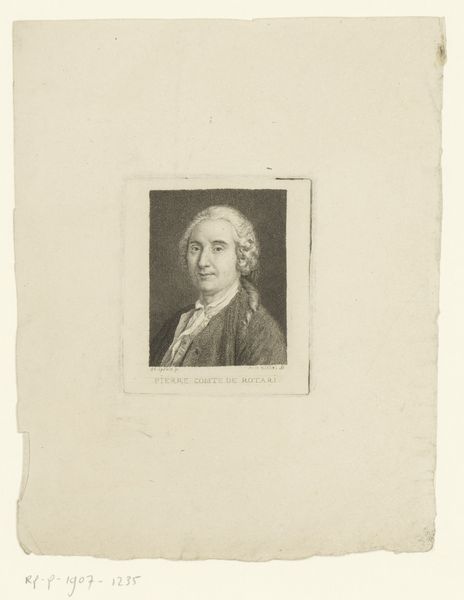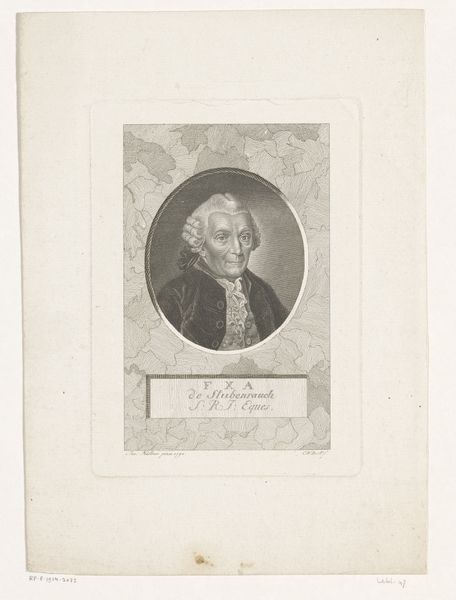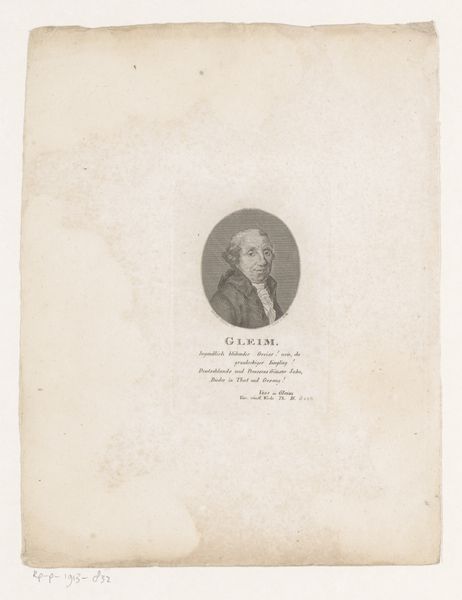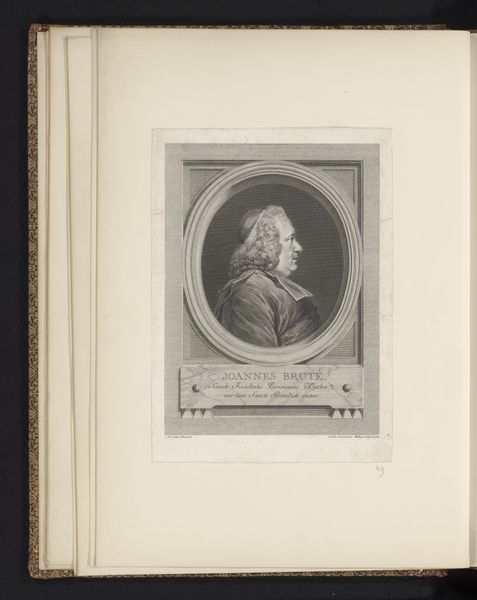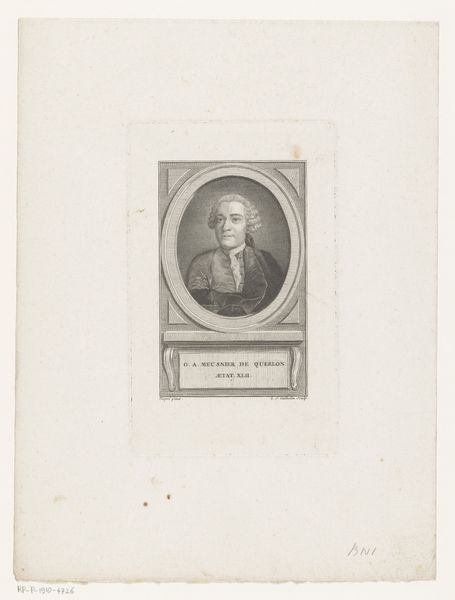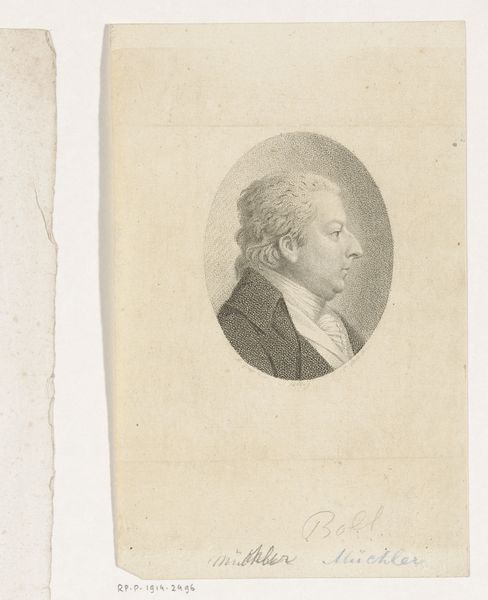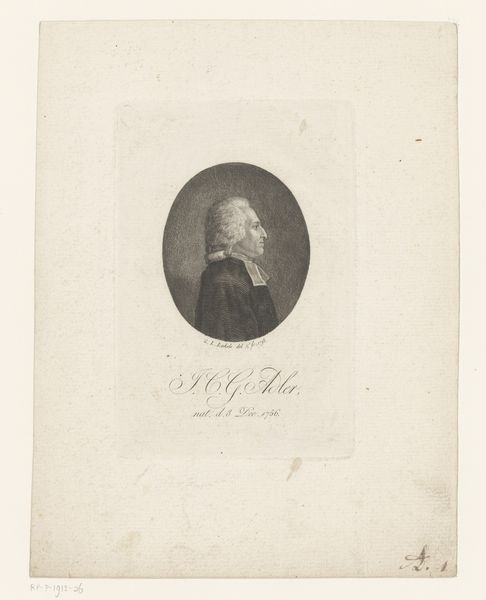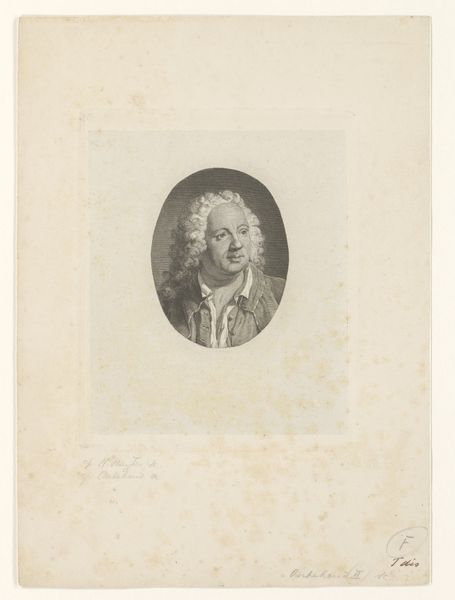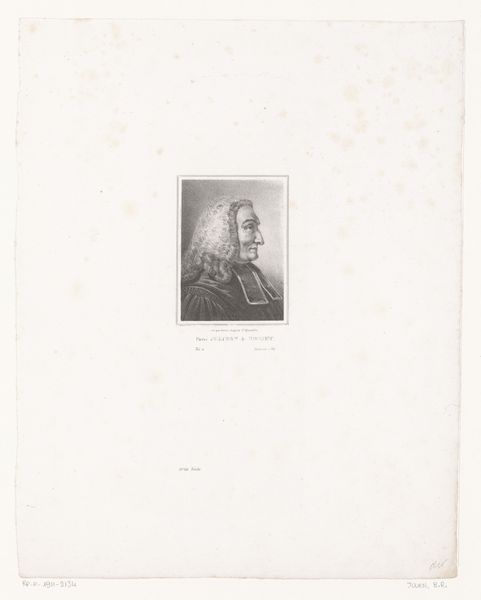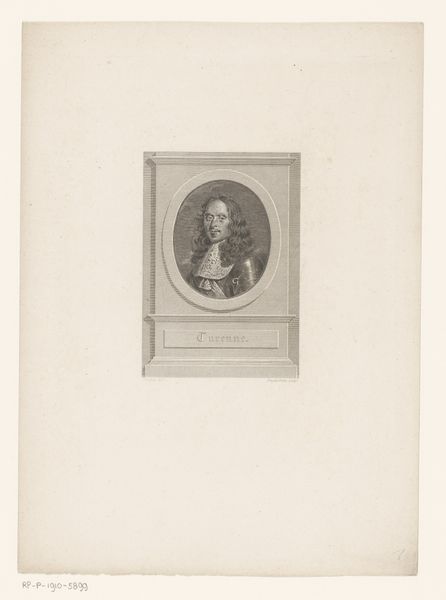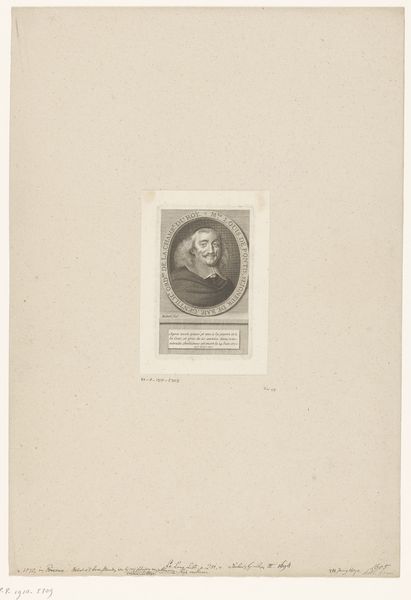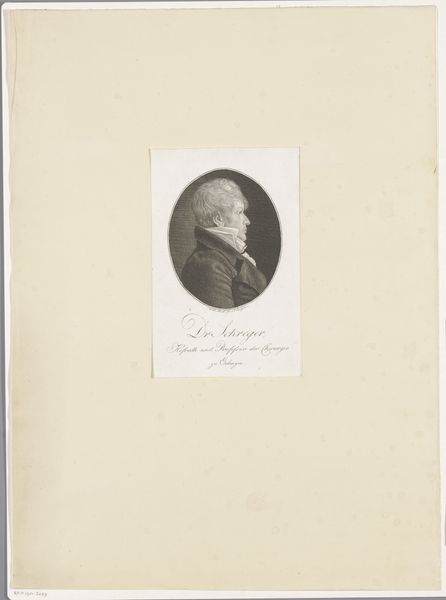
drawing, print, paper, graphite, engraving
#
portrait
#
drawing
# print
#
paper
#
graphite
#
engraving
#
realism
Dimensions: height 132 mm, width 111 mm
Copyright: Rijks Museum: Open Domain
This is a portrait of Johannes Veit, made by Johann Kaspar Eissenhardt in the 19th century using an engraving technique. Looking closely, we see the subject presented in a way that communicates respectability. Portraiture of this kind would have been the province of the middle and upper classes. Made in Germany, this image exists within a world that was changing rapidly due to the Industrial Revolution. The institutions of art were equally affected, and artists increasingly sought ways to represent and grapple with these changes. Photography was on the rise as a way of capturing likeness, and traditional portraiture was forced to adapt. To truly understand this image, we would need to delve deeper into the history of portraiture and engraving, looking at how such images were consumed and what social function they served. The meaning of art is always contingent on social and institutional context.
Comments
No comments
Be the first to comment and join the conversation on the ultimate creative platform.
